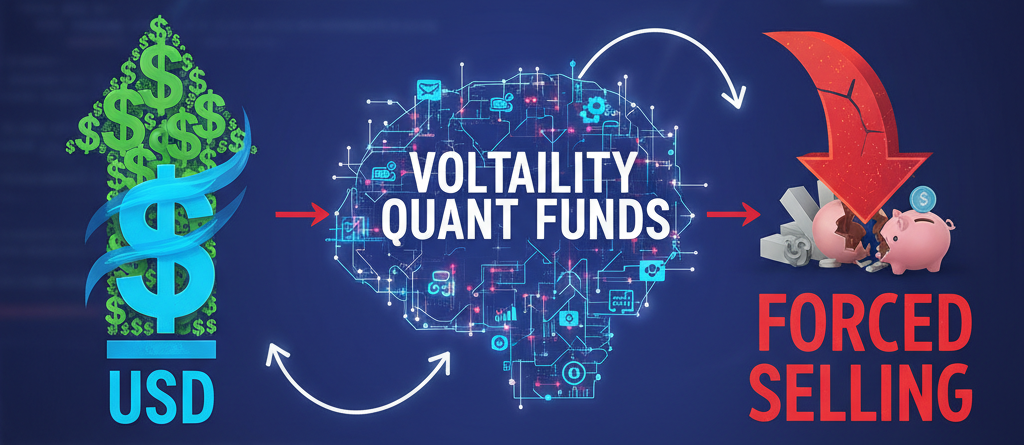Retirement planning insights for high-income earners who want to secure their financial future
The Cautionary Tale of Jack Whittaker
In the world of financial planning, there are stories that stand as stark warnings. Few are as compelling as that of Jack Whittaker, a successful construction company owner from West Virginia who was already earning over $1 million annually before his life took an unexpected turn.
In December 2002, Jack won the Powerball lottery jackpot worth $314 million – at that time, the largest undivided lottery payout in American history. After taxes, he walked away with approximately $113 million in a lump sum.
With his existing business acumen and this enormous windfall, one would assume Jack was set for life. The reality proved dramatically different.
Within just four years, Jack was virtually broke.
What followed his lottery win was a cascade of poor decisions and misfortune:
- Extravagant spending on luxury items and properties
- Millions given away to family, friends, and his church without proper planning
- A charitable foundation established without adequate governance
- Large amounts of cash kept unsecured (over $500,000 was stolen from his car)
- Development of gambling and alcohol problems
- Numerous lawsuits and legal entanglements
By 2006, Jack famously told reporters, “I wish I’d torn that ticket up.” By 2007, his bank accounts were nearly empty. By the time of his death in 2020, he was living modestly, having lost not just his fortune, but his health, reputation, and many family relationships.
What makes Jack’s story particularly relevant to high-income professionals is that his original income – before the lottery – would have been more than sufficient to build lasting wealth with proper planning. The lottery simply magnified the consequences of financial mismanagement.
Why High Earners Still Struggle with Retirement
Jack’s story may seem extreme, but the underlying principles apply to many high-income professionals. Statistics show that approximately 25% of households making $150,000+ annually have less than three months of emergency savings, and many are drastically unprepared for retirement.
If you’re earning over $230,000 annually, you face unique challenges that can derail your retirement plans:
- Lifestyle Inflation
As income increases, spending typically follows. The luxury vehicles, country club memberships, private schools, and vacation properties create a standard of living that becomes difficult to maintain in retirement without substantial savings.
Many high earners unconsciously adopt the mindset that their income will always continue to grow. This assumption can lead to inadequate saving during peak earning years – a mistake that’s difficult to correct later. - Higher Tax Burdens
Those in higher income brackets face federal tax rates up to 37%, plus state and local taxes. Without strategic tax planning, a significant portion of earnings goes to taxes rather than building retirement assets.
Additionally, high earners often face the Alternative Minimum Tax (AMT), Net Investment Income Tax, and phase-outs of various deductions and credits – further complicating their tax situation. - Limited Access to Traditional Retirement Vehicles
High-income earners face restrictions on many tax-advantaged accounts:
– Roth IRA contributions phase out completely at higher income levels
– Traditional IRA deductibility may be limited or eliminated
– Qualified retirement plans have contribution limits that represent a small percentage of high incomes
These limitations mean high earners must be more creative with their retirement planning strategies. - Delayed or Inconsistent Saving Patterns
Many high-income professionals – doctors, lawyers, business owners – achieve their highest earnings after years of education, training, and practice building. This delayed start means less time to benefit from compound growth.
Business owners in particular often reinvest heavily in their businesses rather than diversifying their retirement savings, creating concentration risk. - False Sense of Security
Perhaps most dangerous is the assumption that high income naturally translates to long-term financial security. This mindset can lead to procrastination in retirement planning and a shock when the numbers don’t add up.
Strategic Retirement Planning for High-Income Earners
Successfully navigating these challenges requires specialized strategies. Here’s what high-income earners should consider:
Maximize Tax-Advantaged Accounts
Even with income limitations, several strategies can help:
- Max out employer retirement plans: Contribute the full $23,000 (2025 limit) to your 401(k), plus an additional $7,500 if you’re over 50. Consider both traditional and Roth options within your plan.
- Backdoor Roth IRA: While direct Roth IRA contributions are phased out for high earners, the “backdoor” strategy allows you to make non-deductible traditional IRA contributions and then convert them to a Roth IRA.
- Mega backdoor Roth: If your employer plan allows after-tax contributions beyond the standard limits, you may be able to contribute up to $69,000 total (2025 limit) and convert those funds to a Roth account.
Leverage HSAs as Retirement Accounts
Health Savings Accounts offer unique triple tax advantages:
- Tax-deductible contributions
- Tax-free growth
- Tax-free withdrawals for qualified medical expenses
In 2025, families can contribute $8,300 to an HSA ($9,300 if 55+). The key strategy is to pay current medical expenses out-of-pocket while investing HSA funds for long-term growth. After age 65, HSA funds can be withdrawn for any purpose (paying only regular income tax), making them function like a traditional IRA with more flexibility.
Consider Cash Balance Plans for Business Owners
If you own a business or professional practice, a cash balance plan allows for significantly higher tax-deductible contributions than a 401(k):
- Annual contributions can exceed $300,000 depending on age and plan design
- Contributions reduce current taxable income
- Assets grow tax-deferred until withdrawal
These defined benefit plans can help high-income business owners rapidly accelerate retirement savings during peak earning years.
Diversify Across Tax Buckets
Tax diversification is crucial for high-income retirement planning:
- Pre-tax accounts: Traditional 401(k)s, SEP IRAs, and cash balance plans provide current tax deductions but create future tax liabilities.
- Roth accounts: Backdoor Roth IRAs and Roth 401(k) contributions create tax-free growth and withdrawals.
- Taxable brokerage accounts: While not tax-advantaged upfront, these offer flexibility and potential for long-term capital gains treatment.
- Tax-deferred insurance strategies: Properly structured permanent life insurance can provide tax-free retirement income through policy loans.
Having assets in various tax categories allows for strategic withdrawals in retirement, potentially lowering your effective tax rate.
Explore Advanced Planning Vehicles
Several specialized strategies are particularly valuable for high-income earners:
- Non-qualified Deferred Compensation (NQDC) Plans: These employer-sponsored plans allow executives to defer substantial portions of their compensation and bonuses, reducing current taxation and potentially allowing for withdrawal in lower tax brackets during retirement.
- Municipal Bonds and Bond Ladders: These provide federally tax-free income (and potentially state tax-free if issued in your state of residence), creating predictable cash flow in retirement.
- 529 Plan Strategic Rollovers: Recent legislation allows unused 529 education funds to be rolled into Roth IRAs under certain conditions, creating an additional Roth funding option.
- Deferred Income Annuities: These can provide longevity protection, guaranteeing income that begins at advanced ages (75-85) when other resources may be depleted.
Implement Asset Location Strategies
Where you hold investments can be as important as what investments you hold:
- Place tax-inefficient investments (bonds, REITs, high-turnover funds) in tax-advantaged accounts
- Keep tax-efficient investments (index funds, long-term equity holdings) in taxable accounts
- This approach can boost after-tax returns by 0.5-0.75% annually without taking additional risk
Develop Passive Income Streams
Diversifying income sources provides both security and tax advantages:
- Real estate investments: Direct ownership or through private REITs can provide ongoing income, appreciation, and tax benefits through depreciation.
- Business investments: Passive stakes in businesses can generate quarterly distributions without active involvement.
- Intellectual property: Royalties from books, patents, or creative works can provide ongoing income with favorable tax treatment.
Don’t Overlook Healthcare Planning
Medical expenses represent one of the largest retirement costs, with estimates suggesting a 65-year-old couple will need approximately $315,000 for healthcare expenses in retirement:
- Consider long-term care insurance between ages 50-60
- Budget for Medicare premiums and supplemental coverage
- Health Savings Accounts can help fund these expenses tax-free
Common Mistakes High-Income Earners Make
Even sophisticated professionals make these critical errors:
- Assuming Income Equals Wealth
Your income statement is not your balance sheet. High income creates wealth only when systematically converted to assets. Research shows approximately 25% of households earning $150,000+ live paycheck to paycheck. - Overreliance on Employer Stock or Business Equity
Many executives accumulate substantial company stock through options and grants. Similarly, business owners often have the majority of their net worth tied to their business. This concentration creates significant risk – remember Enron, WorldCom, or more recently, WeWork and regional banks. - Ignoring Withdrawal Strategy Planning
How you withdraw retirement assets can be as important as how you accumulate them. Without strategic withdrawal planning, you might:
– Trigger unnecessary taxes
– Push yourself into higher tax brackets
– Increase Medicare premiums through IRMAA surcharges
– Create tax inefficiency across your portfolio - Inadequate Legacy and Estate Planning
For high-income earners, estate planning goes beyond basic wills. Without proper structures, a significant portion of your assets could go to taxes rather than heirs or charitable causes. - Making Emotional Investment Decisions
Even sophisticated high-income professionals are susceptible to behavioral finance pitfalls – trying to time markets, chasing performance, or holding losing investments too long.
Action Steps: Securing Your Retirement
If you’re earning over $230,000 annually, these steps can help ensure your income translates to retirement security:
- Map your current financial situation:
– Calculate your savings rate as a percentage of income
– Identify tax inefficiencies in your current strategy
– Evaluate your asset allocation and location - Define your retirement vision:
– What lifestyle do you want to maintain?
– When do you want the option to retire?
– What legacy do you hope to leave? - Develop a comprehensive plan:
– Create a savings strategy across appropriate vehicles
– Implement tax diversification
– Address estate and legacy planning
– Establish protection mechanisms (insurance, asset protection) - Consider professional guidance:
– Work with advisors experienced in high-income retirement planning
– Coordinate between your financial advisor, CPA, and estate attorney
Don’t Be the Next Jack Whittaker
Jack Whittaker’s story serves as a powerful reminder that income alone – even extraordinary income – doesn’t guarantee financial security. Without proper planning, discipline, and strategy, even seven-figure earners can find themselves with inadequate resources in retirement.
The good news is that high income provides exceptional opportunity when paired with strategic planning. By addressing the unique challenges you face as a high earner and implementing specialized strategies, you can create lasting financial security for yourself and future generations.
Your income is your most powerful wealth-building tool – make it work as hard for your future as you worked to earn it.







